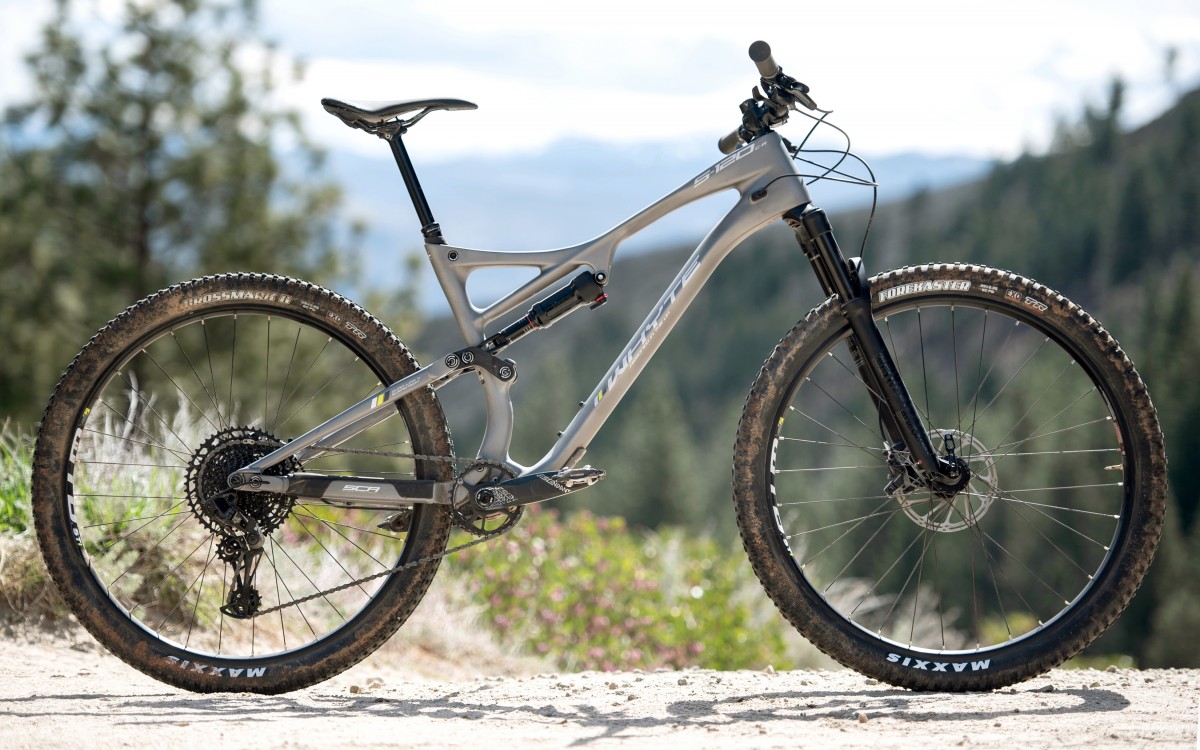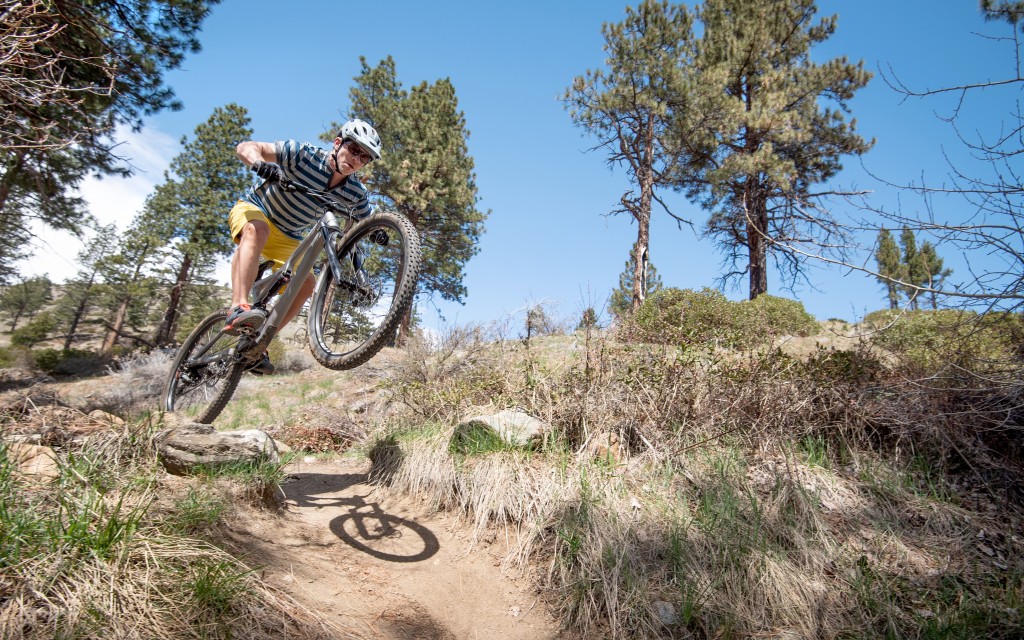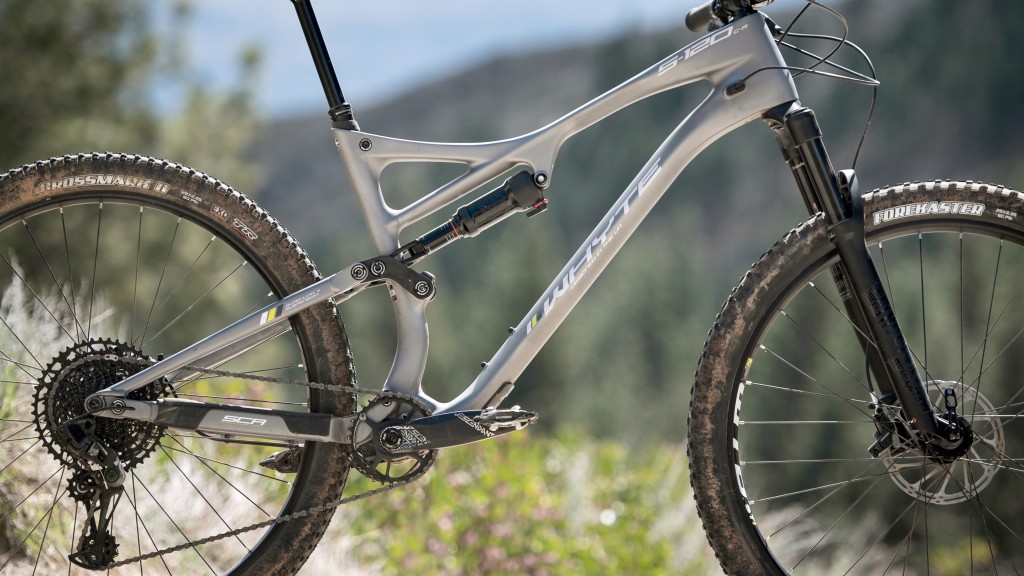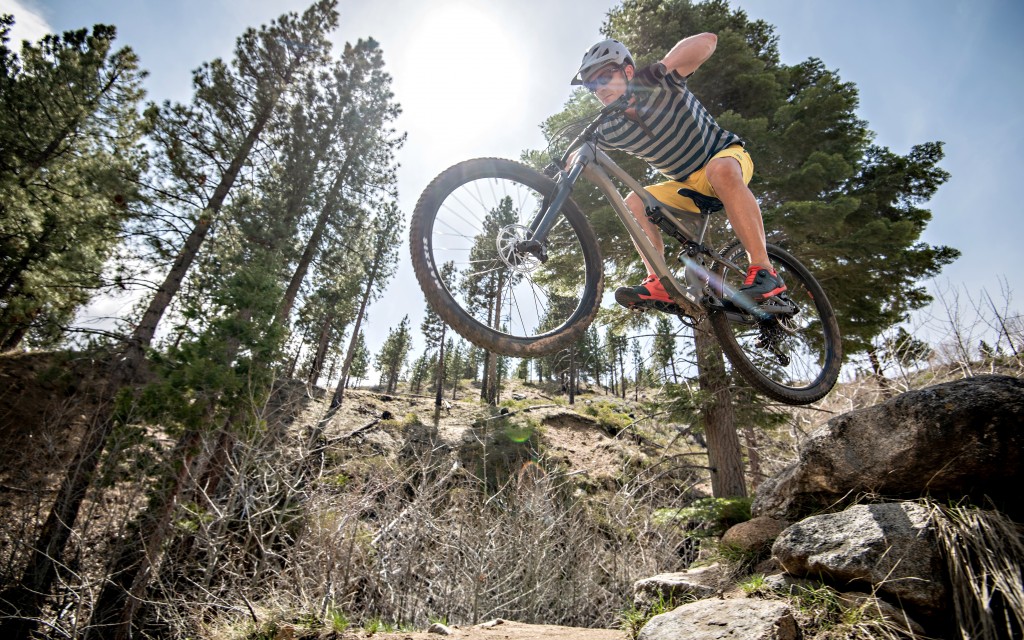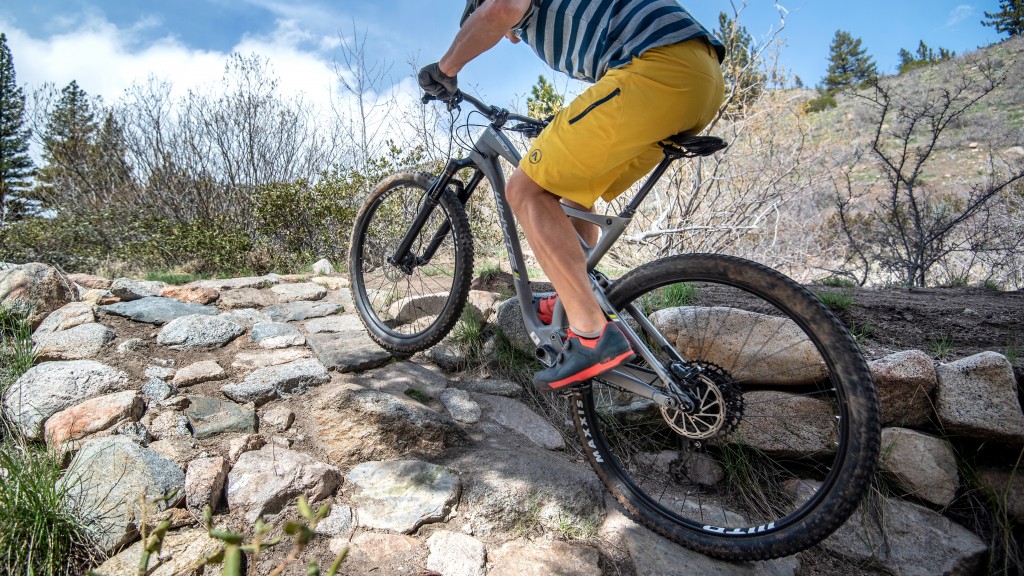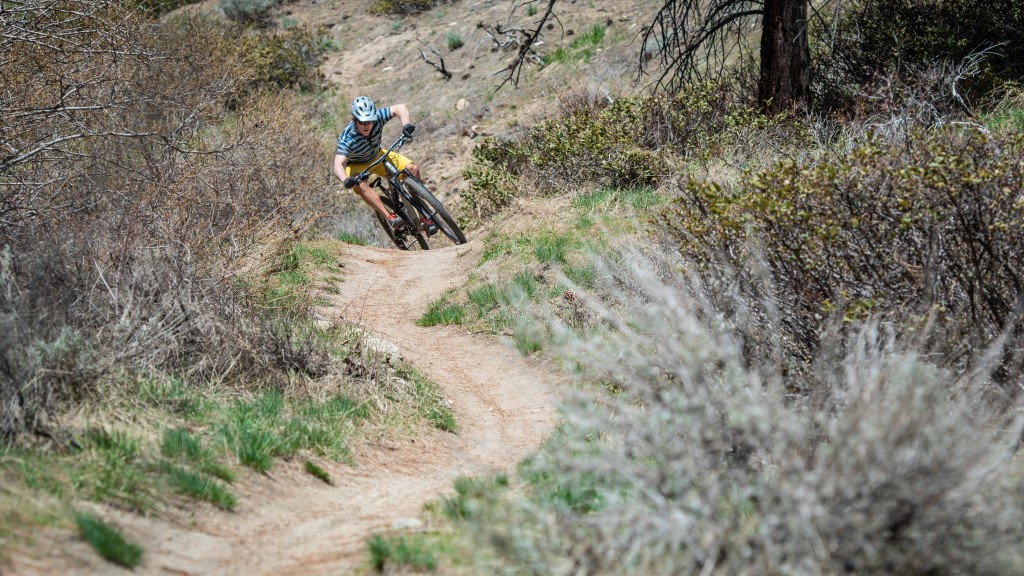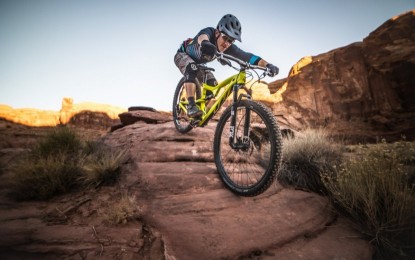Whyte S-120 Carbon R Review
Our Verdict
Our Analysis and Test Results
Should I Buy This Bike?
The S-120 Carbon R is an interesting choice for riders seeking a short travel bike with the angles to get radical. Although there are some glaring holes in the build kit, this bicycle has excellent bones and could easily be transformed into a shred-worthy bike with a minimal monetary investment. All-in-all, there is a lot to like with this bicycle. Stellar climbing abilities are met with stable and predictable descending prowess and a simple and proven suspension design. If this seems like the bike for you, we would recommend scrounging up an extra $600 and purchasing the $3,999 Carbon RS build with much-improved components.
Another bike to consider is the Giant Trance 29 2. The Trance 29 2 is an aluminum bike with 115mm of travel and a $3100 price tag. The Trance offers more confident downhill performance compared to the Whyte. If you frequently ride choppy or loose trails, we prefer the composure and planted feel of the Giant. Neither bikes are featherweights, both weighing about 31-pounds. That said, the Whyte has a better climbing position and the less aggressive tires roll quickly. The Trance is a better option for technical climbing thanks to its superior rear wheel traction.
The new and improved Ibis Ripley is an exceptional short travel trail bike. The recent redesign of the Ripley has made this playful trail more well-rounded and capable than the previous version. The whole bike has been stretched out giving it more stability at speed, but it's not so long, like the S-120, that it's difficult to handle in tighter terrain. The Ripley also has a slacked out head tube angle that make it confident on descents and a steep seat tube angle for comfortable and powerful climbing and mountain goat-like scrambling abilities.
Frame Design
The Whyte S-120 rolls on 29-inch wheels but can also run 27.5+ tires up to 2.8-inches. This bicycle has 120mm of rear wheel travel and uses the tried and true 4-bar suspension design. It has a main pivot just north of the bottom bracket, a pivot on the chainstay just forward of the rear axle, and a pivot with a rocker link approximately halfway up the seat tube. The 4-bar suspension layout grants a lot of design freedom. Traditionally, this system delivers excellent bump compliance and a smooth feel. It does, however, rely heavily on the climb switch to reduce pedal bob.
We measured our large test bike. It has a 643 effective top tube and a 478mm reach measurement. The chainstays are 432mm long and the bottom bracket sits 336mm off the ground. The wheelbase measures a lengthy 1227mm. The head tube angle is 65.4 degrees and the seat tube angle is 75.2-degrees. Our large test bike hit the scales at 31 lbs 5 oz without pedals and set up tubeless.
Design Highlights
- 120mm of rear wheel travel, designed around 120mm fork
- Quad-4, 4-bar suspension design
- Uses reduced offset fork
- 29-inch wheels come stock/can run 27.5+
- Boost spacing
- Press Fit Bottom Bracket
- Carbon front triangle, aluminum rear end
- Available in small-XL
- Three build kits ranging from $3399 (tested) to $5299
Downhill Performance
The S-120 has the angles and attitude to get shreddy on the descent. The long and low geometry inspires confidence on steep trails and when the speedometer gets cranked up. Unfortunately, weak cross-country tires really limit how hard you can ride this bike. This is especially frustrating because it is very close to being a shredder. Complaints aside, downhill performance is good, if not thrilling.
The Whyte isn't an especially playful bicycle. Given its length and relative heft for its travel class, it prefers to be on the ground, rolling fast. Manuals, wheelies, and bonks aren't necessarily its strong suit. It isn't opposed to some trailside shenanigans, but it's longer wheelbase creates a more business-like attitude. If you're looking for a more playful short-travel rig, the Ibis Ripley and Transition Smuggler are better choices.
In years past, long and low geometry has been reserved for enduro bikes. The slack head tube angles and low-slung bottom brackets deliver excellent stability when charging downhill at high speeds. It also puts the rider in a better position on steep sections of trail. In the past year or two, short-travel bikes have been getting more aggressive geometry. When you combine a snappy and efficient short-travel design with aggressive angles, you are left with a shred-worthy, yet sensible, daily driver. This is exactly what Whyte was going for. When perched in the saddle, the S-120 feels like it wants to charge. The front axle is way out in front of the bars and it oozes stability. Shortly, we will get into some of the specification flaws that detract from performance, but it should be clear that this bike has good bones. The frame design is on point.
The 4-bar suspension design is both comfortable and effective. This tried-and-true design may not be the most exciting, but it works well. When charging over small to medium sized chatter, the rear end feels calm and composed. The suspension is quite muted and remains quiet as you pinball down the trail. The RockShox Deluxe shock is not a flashy specification, but it stood up well. We found the Whyte's suspension curve to be near perfect. It is supple enough on small bumps without blowing through its travel on bigger hits. This bicycle has a reasonable amount of anti-squat but trends towards the active side of things. This means the suspension moves under pedal loads. As you get on the gas on a downhill, the suspension isn't all that firm and you will move into the travel. This also lowers your bottom bracket and cranks. As a result, beware of high-speed pedal strikes on the descent. Nobody needs to clip a pedal at 25 miles per hour.
If you've been paying attention, we have a smooth and capable suspension design paired with aggressive, new-school geometry. You may be asking yourself “so what's the problem?” Well, the component specification, particularly the tires, are the proverbial party pooper. You have a bike that wants to go fast and be ridden hard, and Whyte outfitted it with weak rubber. The Maxxis Forekaster 2.35 front tire is okay at best. On the right soil, it can back up some aggressive movements. It performs best in softer conditions. In loose or loose-over-hard conditions, things get sketchy. The Forekaster has a tendency to wash out easily and it can be difficult to control. The Maxxis Crossmark II rear tire is drifty and has no braking bite. It works fine in a straight line but it is easy to lose traction in the corners. It is especially bad when braking through corners as the braking forces reduce the already poor traction. When it comes to shutting down speed, there is zero braking bite and the tire just slides.
The 120mm RockShox Revelation fork is decisively fine. We would never say it is plush, or that it feels good, but it works well enough as a stout fork. This bike came outfitted with SRAM Guide T brakes that needed a bleed immediately. Once we got the air out of the lines, they worked well enough. That said, mediocre brakes with mediocre tires is a recipe for disaster.
Climbing Performance
The S-120 is a capable and predictable climber. This bicycle is a little portly, but the extra weight isn't debilitating on the ascent. The Whyte is efficient although it does benefit from the use of the shock's climb switch. Handling is stellar for a bike this long, although proper line choice really helps in tight sections of trail. The components were a mixed bag on the ascent.
Despite its long and low geometry, the Whyte offers a pretty comfortable climbing position. The 75.2-degree seat tube angle isn't particularly steep or slack. A steep seat tube angle puts the rider on top of the cranks and transfers power more effectively. A slack seat tube angle puts the rider behind the bottom bracket and it can feel like the pedals are out in front of the rider's hips. 75.2-degrees is somewhere in the middle and delivers solid efficiency. The roomy 478mm reach measurement is airy. The cockpit is not cramped in the least and it offers plenty of space for the rider to shuffle weight around.
The Whyte's 4-bar suspension is fairly active. Under pedaling loads, particularly while standing, the suspension moves quite a bit. This can be beneficial for technical, ledgy, climbs. While it seems like suspension movement always reduces efficiency, more active suspension keeps your rear wheel in contact with the trail surface when things get chunky. On smoother, buff, climbs, the S-120 benefits from the use of the shock's climb switch. When you firm the shock up, this bike cruises uphill.
Climbing handling was quite impressive. The 1227mm wheelbase and slack 65.4-degree head tube angle is definitely noticeable but doesn't feel clumsy or clunky. To be sure, bikes with more conservative geometry like the Specialized Stumpjumper ST or Ibis Ripley offer more direct steering, but the Whyte does just fine. The longer running length creates a rock-crawler feel, if you can line this bike up and punch it up a technical pitch, the S-120 will crawl right up. Tighter, technical switchbacks can require some attention. As with most bikes this length, a well-laid-out game plan goes a long way. A clean and smart entry into the switchback is a recipe for success.
The component grouping functioned better on the climb compared to the descent. The less aggressive tires do have the benefit of rolling fast. When you're spinning up smooth trails, the Maxxis Forekaster/Crossmark II combination offers little resistance. As a result, this bike can feel pretty fast. Things go south when you are climbing loose or technical terrain while standing. The Crossmark rear tire has a tendency to spin out very easily given its lack of tread. As a result, riders need to be very careful not to lean too far forward and remove weight from the rear tire. The SRAM NX Eagle drivetrain is decisively fine. It certainly isn't the lightest or most crisp drivetrain, but it works and the 50-tooth climbing gear is nice and light.
Photo Tour
Value
At $3,399, the S-120 Carbon R represents a decent value. Whyte can't quite match the component value delivered by other consumer direct-brands like YT, Commencal, and Canyon. Even though you are getting a carbon fiber frame with the S-120 Carbon R, the aluminum options from the other consumer-direct brands aren't much heavier with significantly better components at lower prices.
Conclusion
The Whyte S-120 is a good bike that is hindered by some questionable components. Still, this bike has a good design platform. It scoots uphill quite effectively and has the attitude to shred the downhill. With a little bit of love, this could be an absolute weapon.


